Shooting Total Solar Eclipse
Safety First: The Sun is extremely bright object. Looking at the Sun directly could damage human eyes irreversibly. Hence a proper Solar Goggle needs to be used at all times while looking at the Sun directly. Old X-ray films, old Negatives, CD-DVD disks, floppy disk etc. are not safe for viewing the Sun directly. Similarly aiming a camera directly at the Sun could damage the camera sensor/shutter irreversibly. Therefore, a Solar filter should be used in front of the lens. Ideally a solar filter equivalent to 14 stops ND filter should be used. With such a filter it would be safe to compose pictures of the Sun using the camera view finder. In case one is always going to use the live view or an app (on phone or laptop) to compose pictures then a solar filter equivalent to 10 stops ND filter could be used. I always use a solar filter with 14 stops. You could use a White filter so that images of Sun appear white; another option is to use Orange filter so that images of Sun appear golden in color. Beware, off the shelf ND filters available in camera stores might not be useful as they might not cut out all the harmful radiation from the Sun. Always use special solar filters and solar goggles.
It is advisable to mount the camera with the filter, on a tripod (it is even better to use an equatorial mount, but that would mean carrying extra luggage and a requirement to align it to North (South) Celestial Pole during day time – a tall order in itself).
Begin your shooting session well before the expected first contact to get your bearings right. It is difficult to point the camera at the Sun via filter and compose the picture. You would need a bit of time to get the Sun in field of view properly. If you wish to capture the full expanse of the dazzling corona of the Sun during totality then shoot at focal length anywhere from 300 mm to 600 mm (on a full frame camera). Set the aperture to something like f/8, f/10. Try to get shutter speed between 1/250 to 1/800 while Sun is still fully bright. Check from Internet/experts about Sun spots cycle. If Sun Spots are expected to be present on the day of eclipse then in the first few test shots check if the Sun spots are present in the picture. Presence of Sun spots in the picture indicates correct exposure.
 Alternately if you wish to get some foreground elements like trees, cliffs etc. along with the corona of the Sun in the picture during totality then you can choose a wide angle lens, but remember in such situations during pre and post totality phases, the size of Sun in the frame would be very small and no foreground elements will appear in the picture due to Solar Filter.
Alternately if you wish to get some foreground elements like trees, cliffs etc. along with the corona of the Sun in the picture during totality then you can choose a wide angle lens, but remember in such situations during pre and post totality phases, the size of Sun in the frame would be very small and no foreground elements will appear in the picture due to Solar Filter.
You will need to adjust the camera on the tripod every few minutes, otherwise due to rotation of the Earth, Sun shall not remain in the field of view of the camera. If you are using an equatorial mount then this nuisance won’t be there. Definitely adjust the camera and get the Sun in the middle very close to expected time of totality.
Keep shooting picture during this pre-totality duration. Looking at phases of the Sun later on is very interesting.
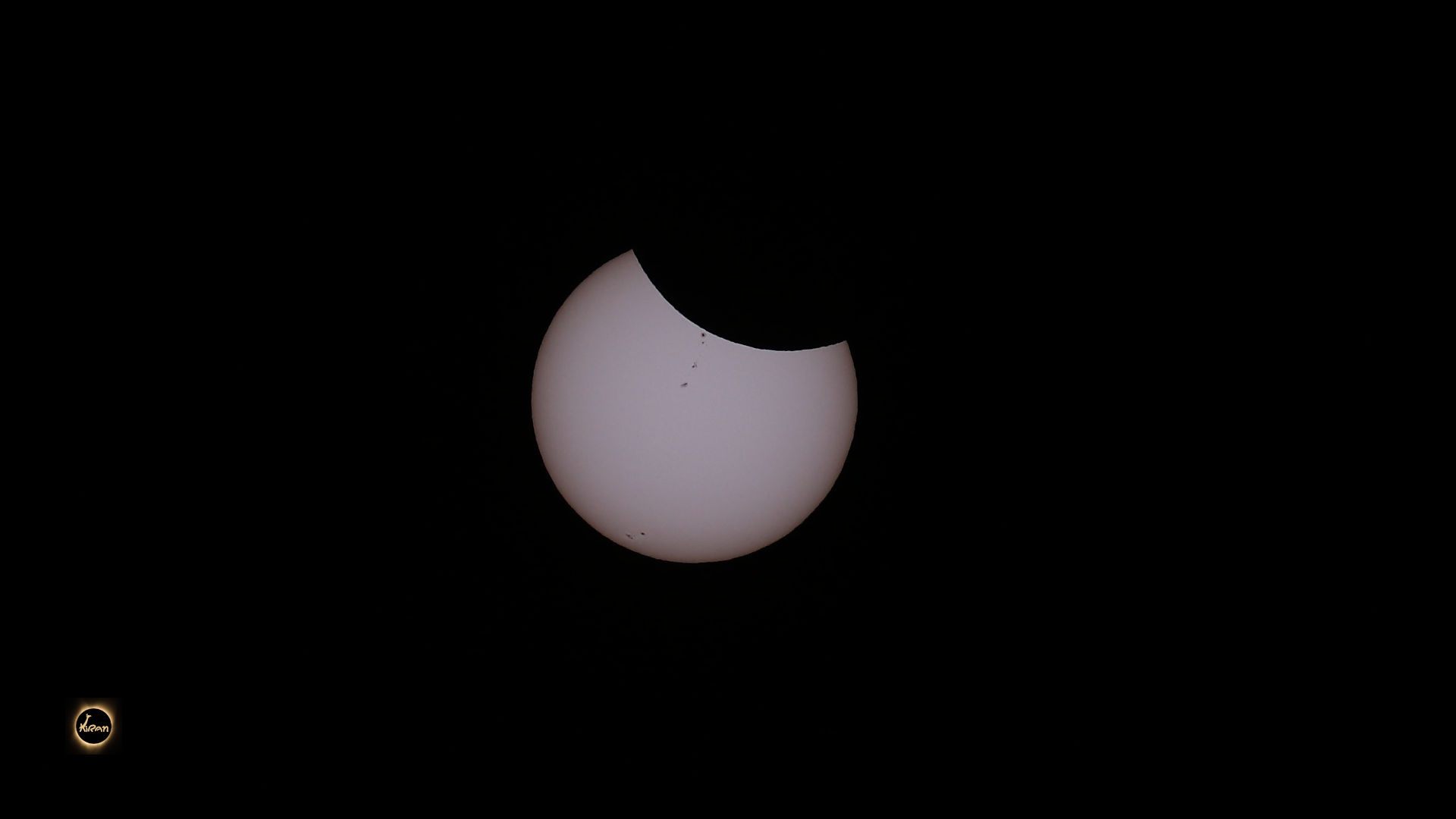 At all times keep an eye on the Sun via your solar goggles. Solar goggles are very dark so while fiddling with the camera, goggles will need to be removed, but while checking the Sun, goggles should be worn. You will need to get used to this; another reason why you should start your shooting session early.
At all times keep an eye on the Sun via your solar goggles. Solar goggles are very dark so while fiddling with the camera, goggles will need to be removed, but while checking the Sun, goggles should be worn. You will need to get used to this; another reason why you should start your shooting session early.
When you sense the Totality is going to be achieved in few seconds, switch your lens to manual focus mode (during totality it is so dark that auto focus won’t work and if you try to click pictures, you will waste precious time in focus hunting). You could quickly apply a sticking tape on the focusing ring of the lens so that the lens setting won’t change after you have switched to manual focusing. After this quickly remove the solar filter. (You get two types of filters the usual screw-in type and kind of ring type. Ring type filter is hung on the lens hood. Ring type filter is very easy to remove very quickly), and remove the solar goggle. Quickly try to image the (first) Diamond Ring effect.
Totality is a very surreal feeling and you might need few seconds to get back to your composure. Enjoy the dazzling corona of the Sun with naked eyes first – you have not seen anything like this before, if this is your first experience with totality. Thereafter take images of the corona (without the filter), you will need to increase ISO and/or slow down the shutter to get good exposure. Take multiple shots at various exposure, you have no time to check histogram during totality so just fire shots at various exposure. Also try to capture Baily’s beads that are typically visible during totality. Remember, whatever be the time of totality, it always feels like it lasted only for 17 seconds!
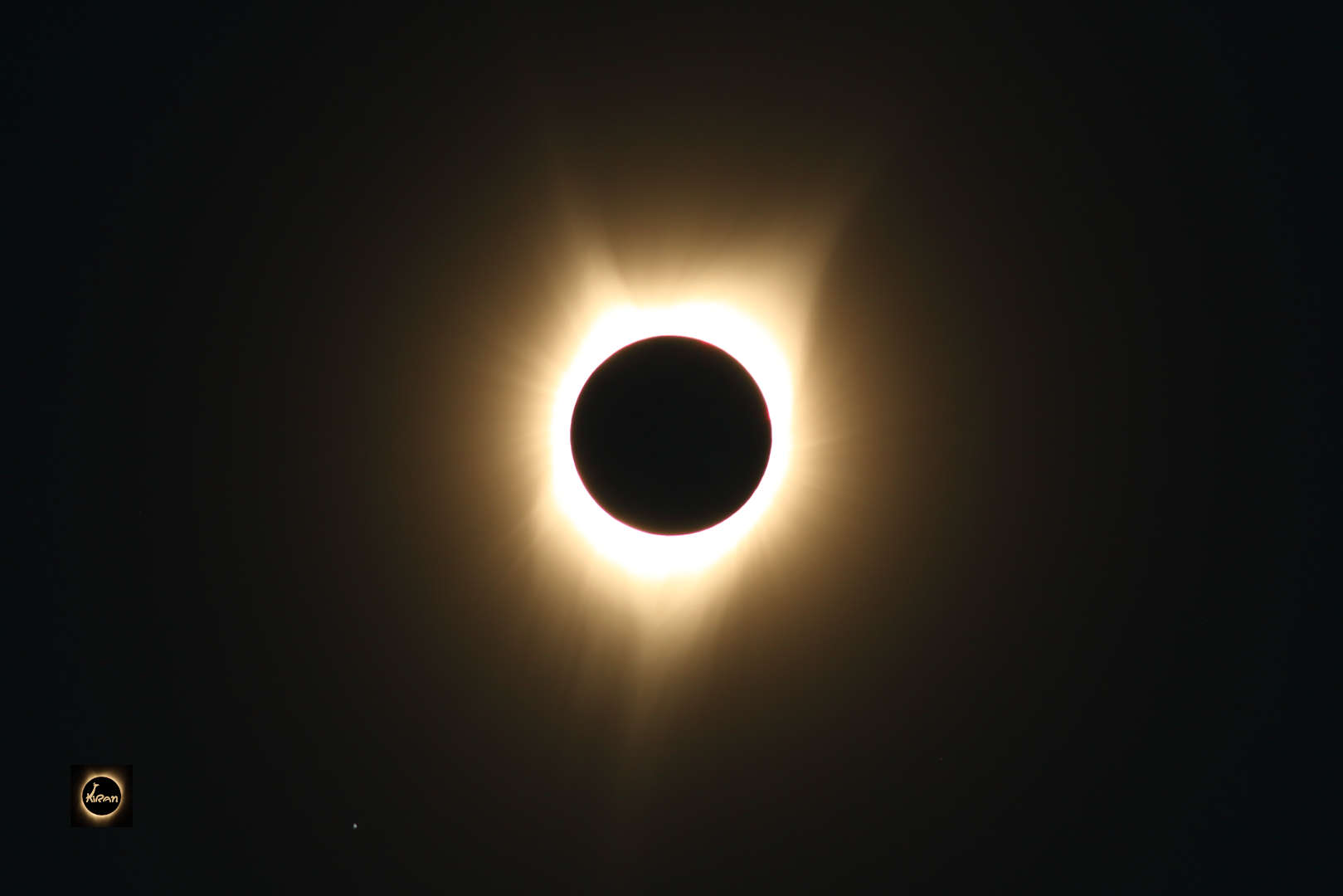
Once you realize, there are only few seconds for the totality to end then be ready to capture the (second) Diamond Ring.
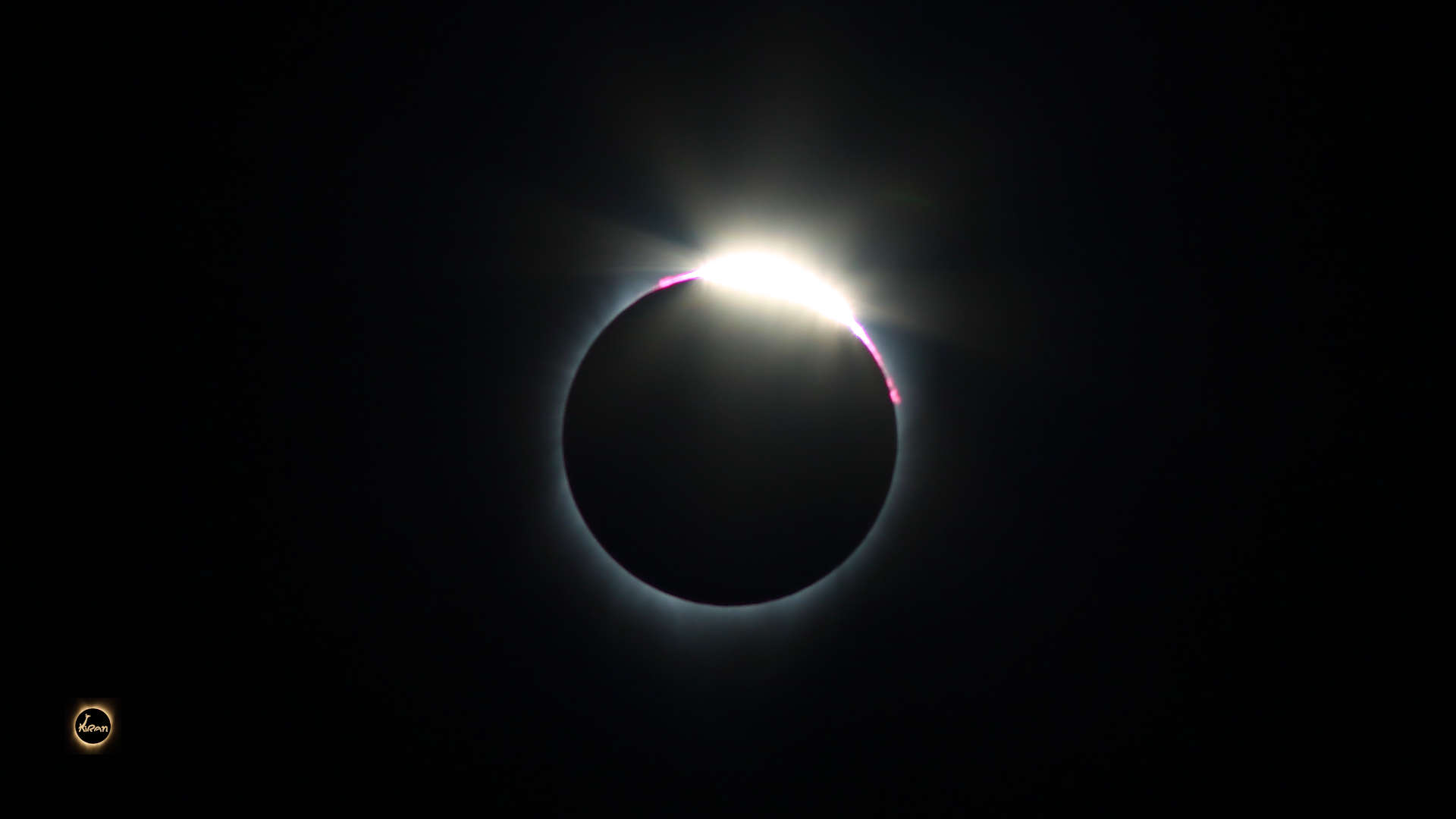
Once even a tiny sliver of Sun becomes visible, quickly put the filter back on lens, remove the tape on the lens focus ring and turn it back on Auto-Focus and wear your solar goggles back.
Keep shooting the Sun as now its phases grow. Of course, keep adjusting the tripod so that the Sun remains in center at all the time. Keep shooting till you get images of full Sun.
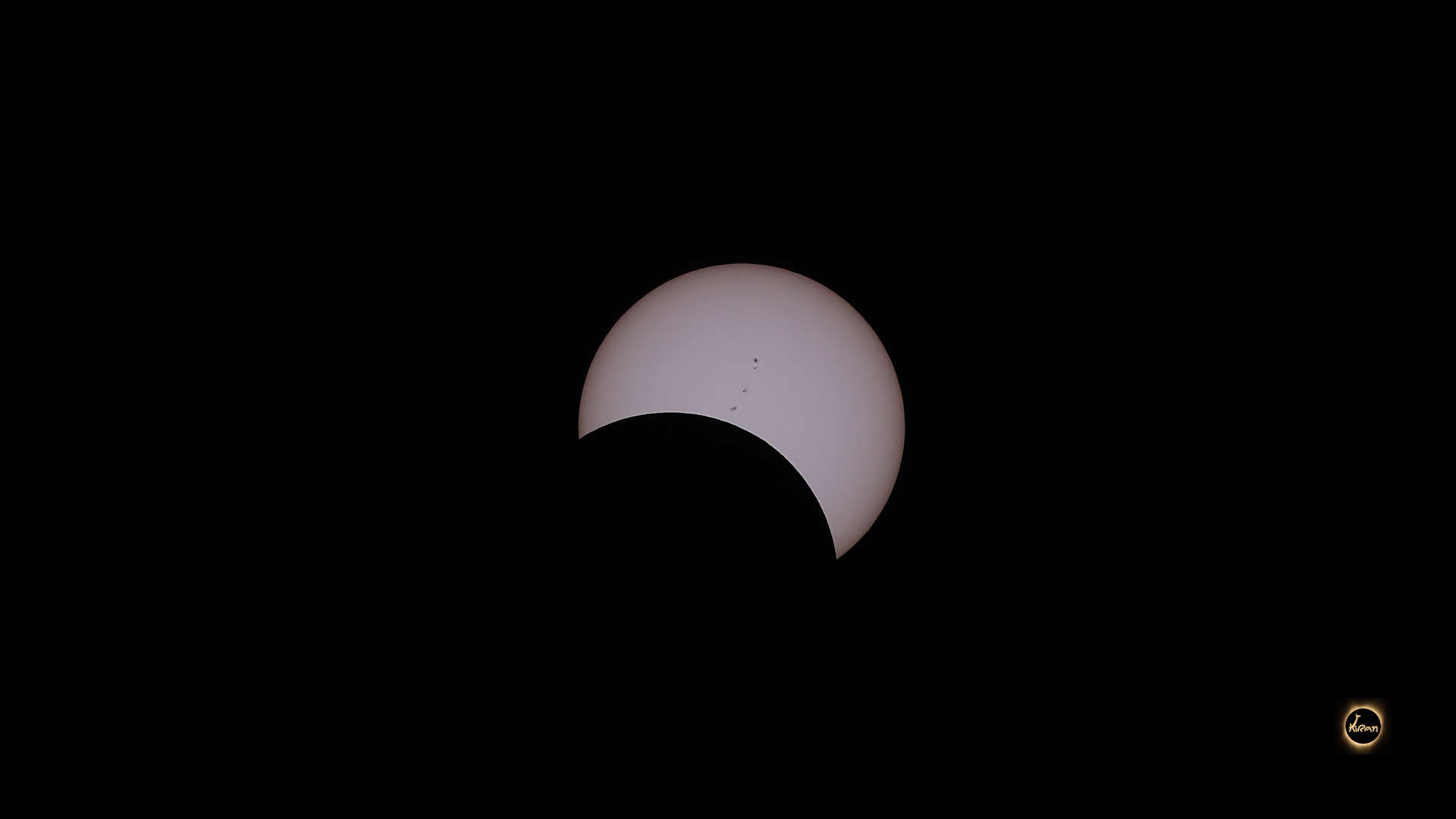
Enjoy your pictures once you have packed up your equipment and are ready to go home!
If you manage to take multiple pictures of totality at various exposures then try to stack them to bring out the dazzling corona of the Sun and other features like chromosphere of the Sun, Sun prominences, Earthshine etc. Here is such a composite image of the totality.

This information is for shooting total solar eclipse. In case of Annular or Partial Solar eclipse ignore the part relevant for totality (removing filter/goggle, changing the lens to manual focus and back to auto focus etc.) and remember during such eclipses you will not be able to image the corona and diamond ring.
This article was first published in January-March-2021 issue of “Khagol Vishwa” an electronic publication of Khagol Mandal (an NGO dedicated to the cause of furthering knowledge of Astronomy, in the society, in general). I wish to express my gratitude to the publishers of “Khagol Vishwa”.
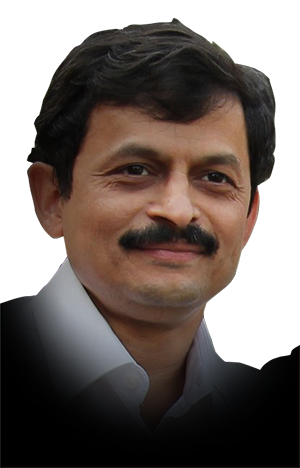
Very Nice picture
I read the blog. It has a ton of useful information. But I don’t think I will still mess up at the last minute. As you said, you also want to enjoy that moment. It is very surreal moment.
Thank you so much for sharing your experience. Hope to get a few good pics this year.
I am going to utilize this knowledge on Monday, April 8th, 2024. Thanks again for sharing.
Hope this was useful on April 8, 2024.